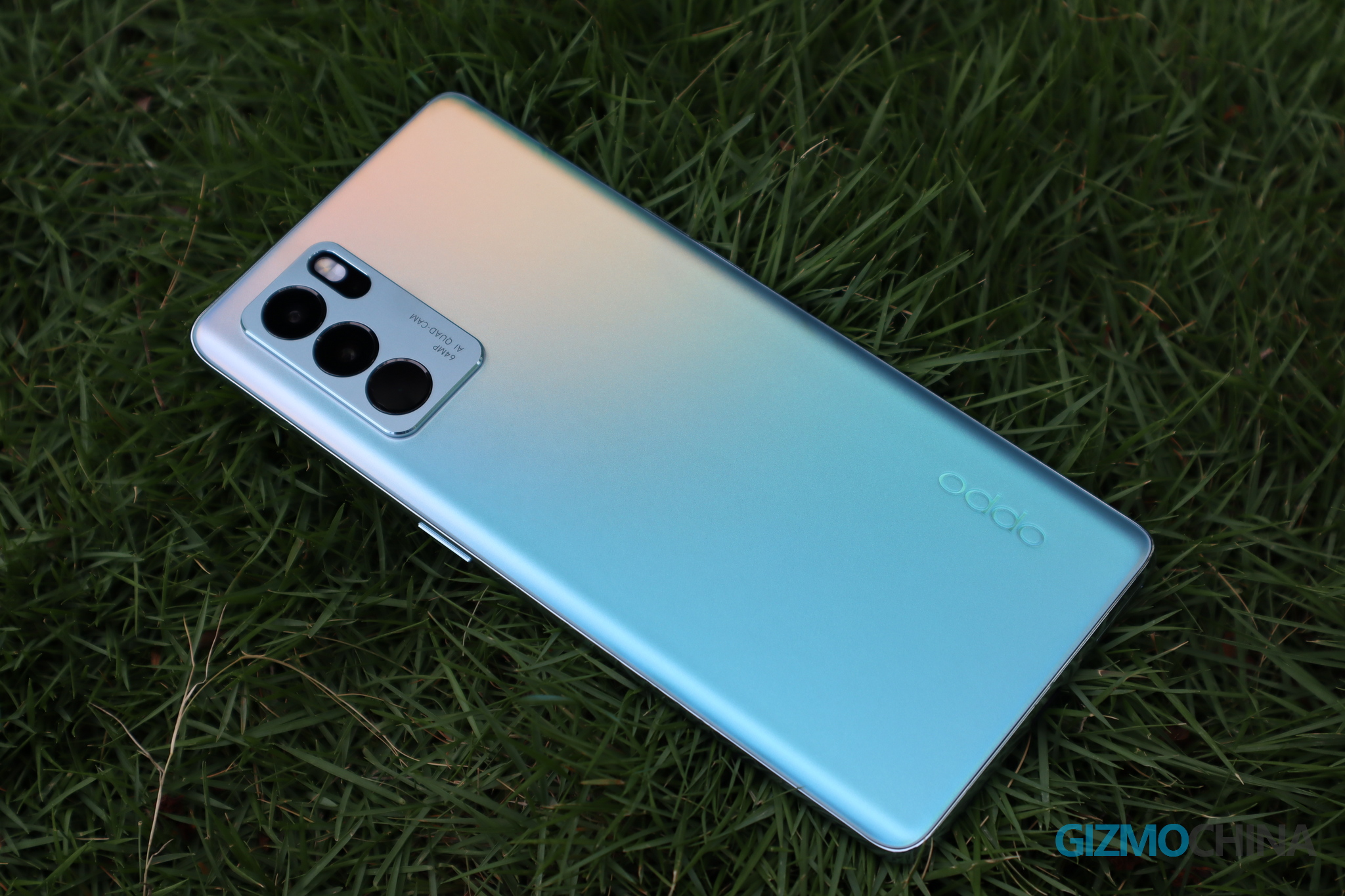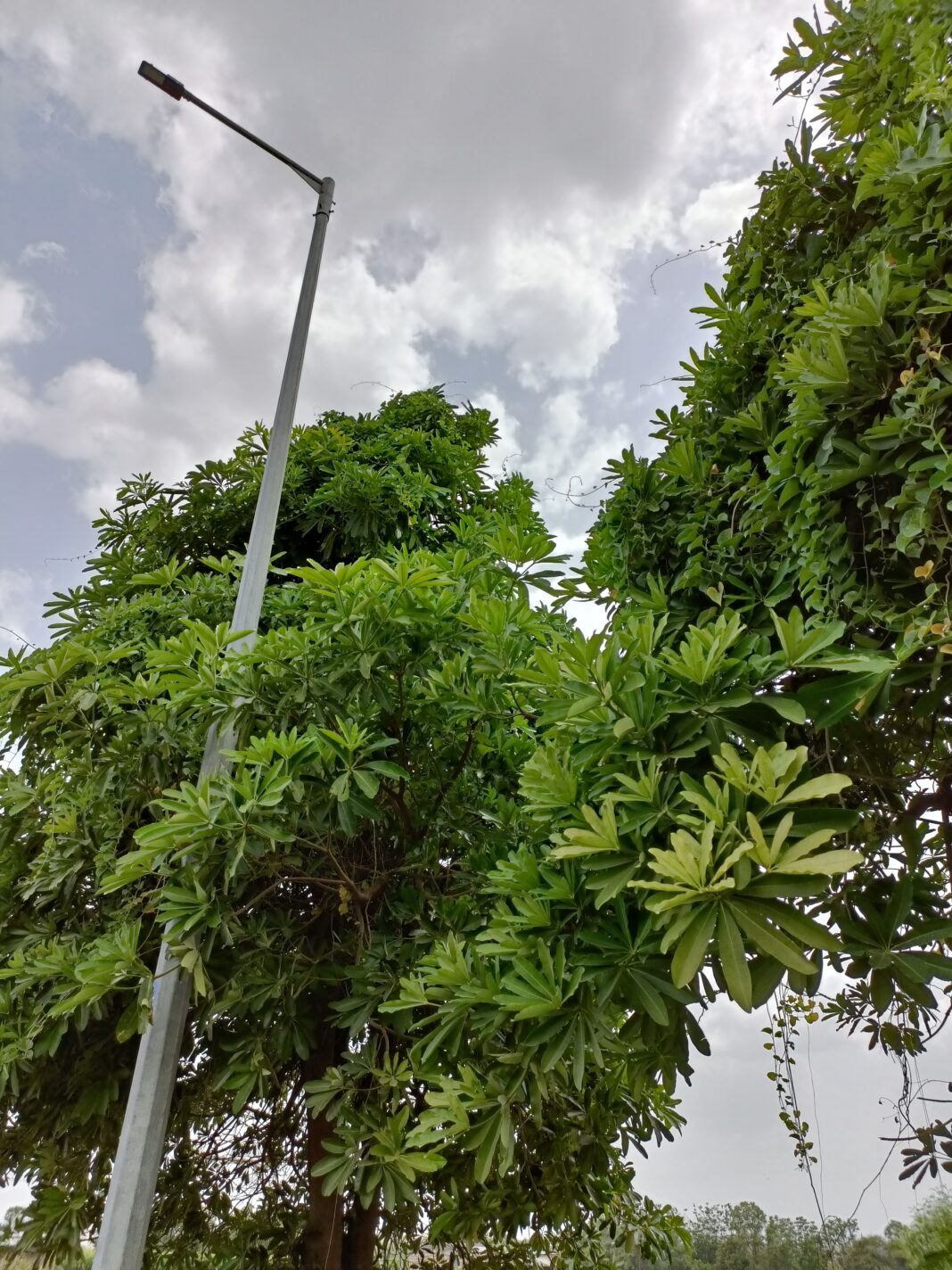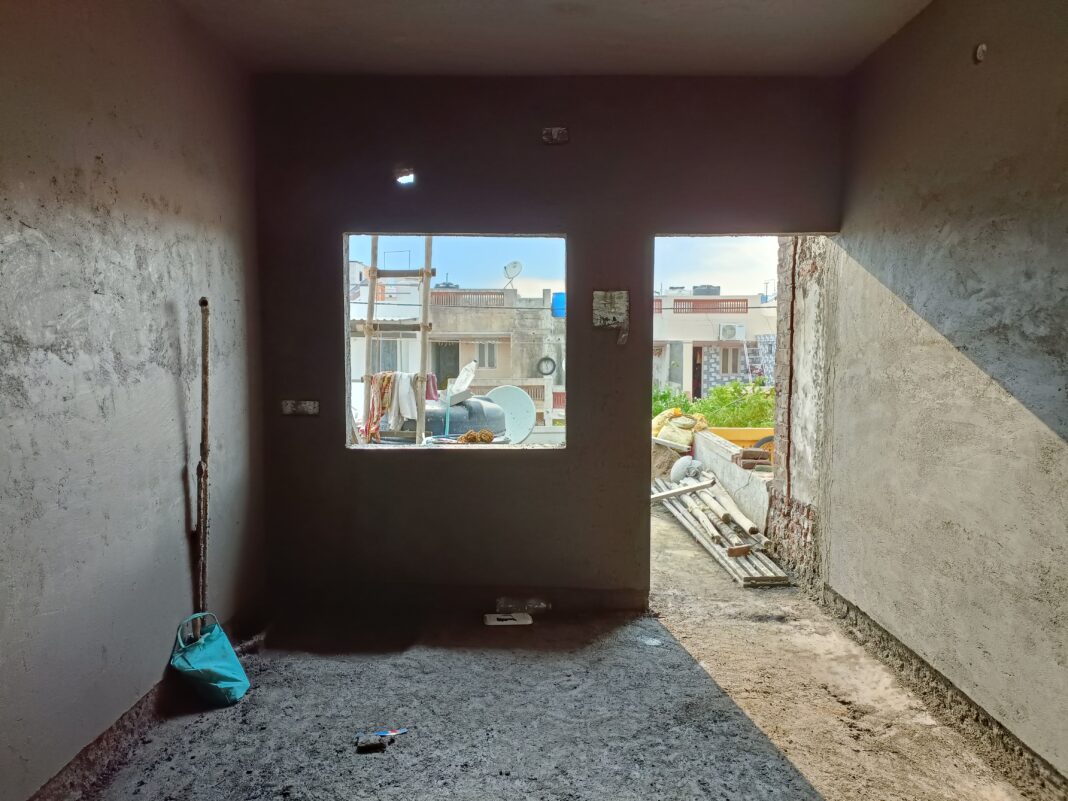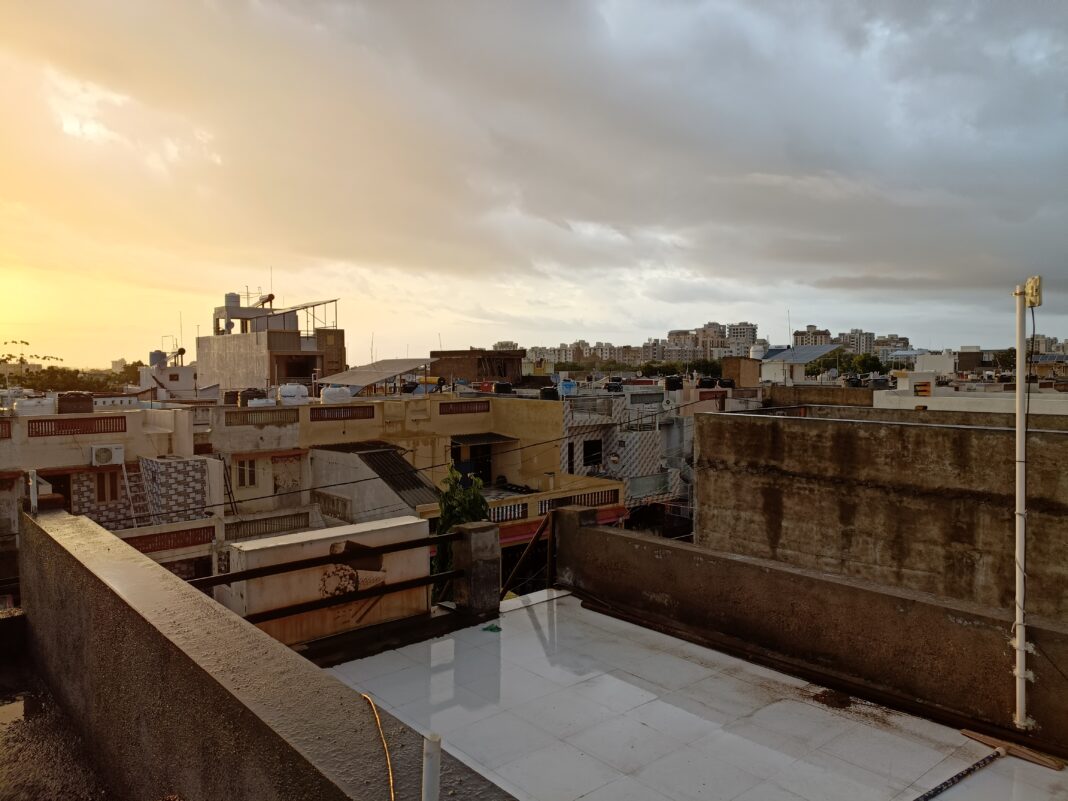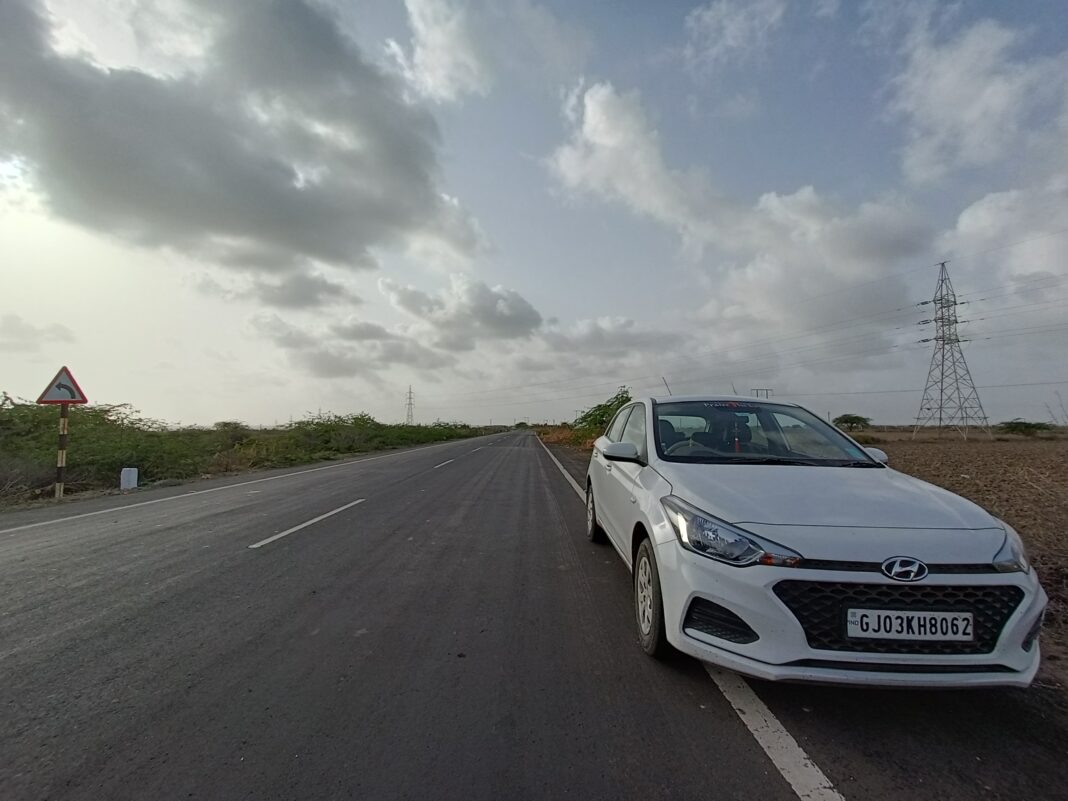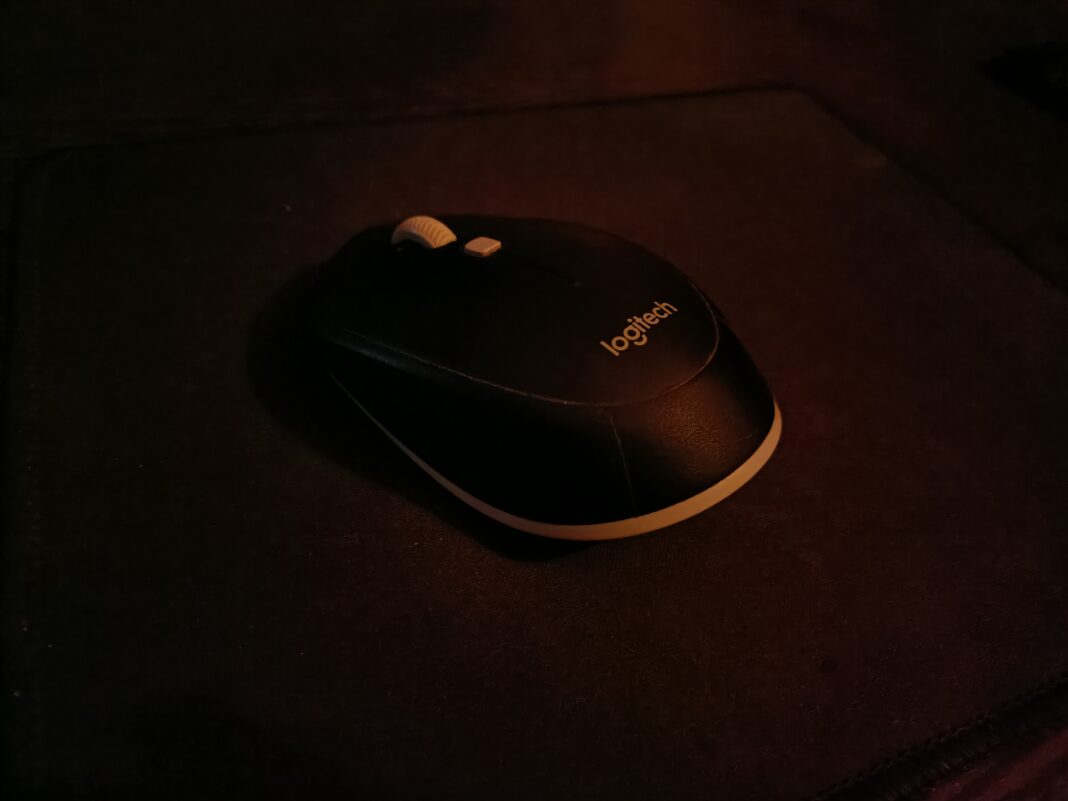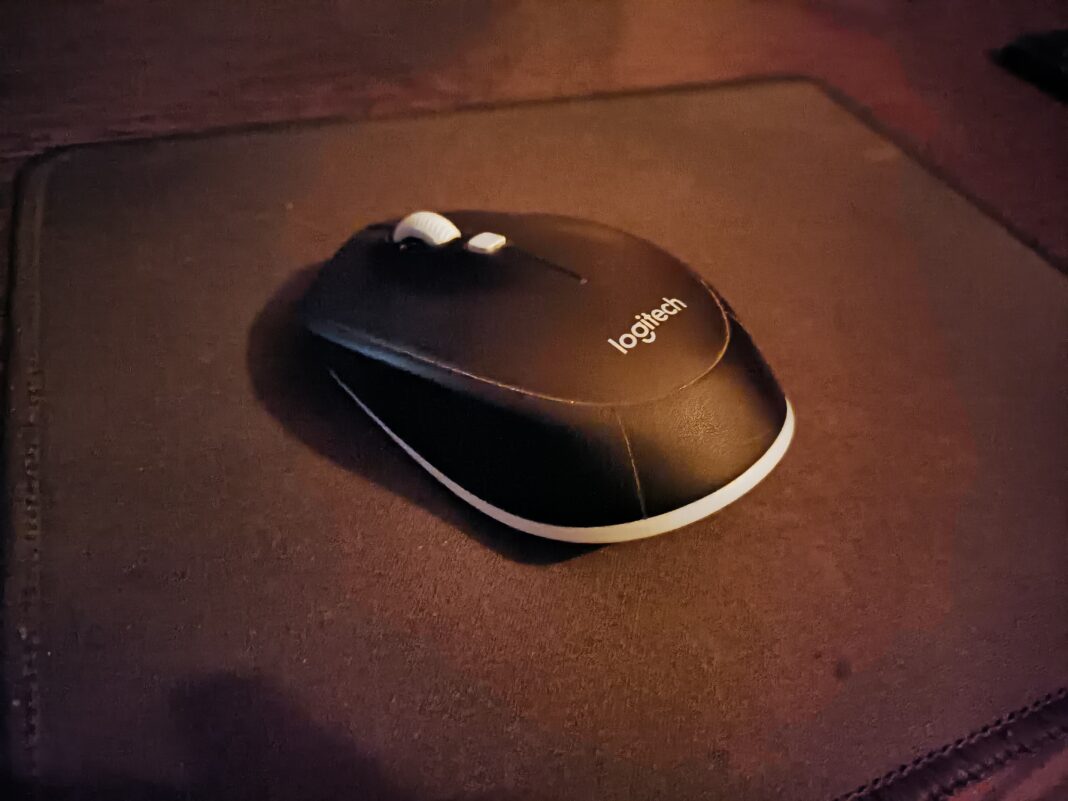A few days ago, OPPO unveiled the OPPO Reno 6 series for India. The brand brought in two models to the country, namely the OPPO Reno 6 5G and the OPPO Reno 6 Pro 5G. They are exactly the same phones announced in China, back in May. Both these models feature stunning design, MediaTek chipsets, and 5G connectivity.
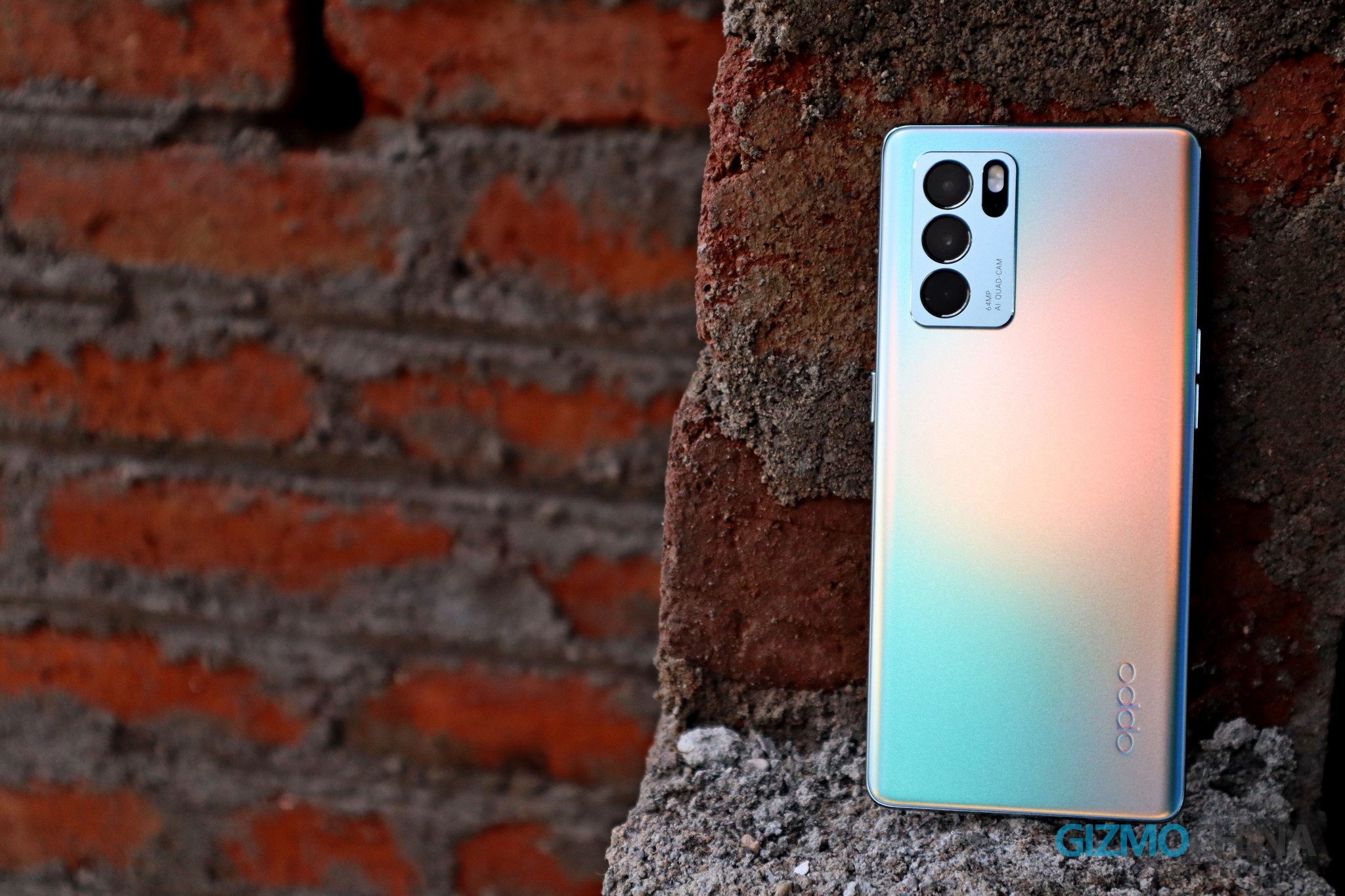
I have been using the OPPO Reno 6 Pro 5G for quite a while now. The handset is priced at ₹39,999 (~$534) in India for the sole 12GB + 256GB variant. Let’s discuss whether you should buy this handset in my full review.
OPPO Reno 6 Pro 5G Review
Disclaimer:
This review is based on the author’s first-hand experience with an OPPO Reno 6 Pro 5G Aurora (12GB + 256GB) review sample loaned by OPPO India. The opinions stated here are the author’s alone.
The device was running ColorOS 11.3 based on Android 11 with firmware version CPH2249_11_A.11 throughout the review period.
Design and Build
The OPPO Reno 6 Pro 5G is the 3rd generation handset in the lineup to feature the Reno Glow design. To learn more about it, check out our article on the same.
In simpler words, the phone sports a glass sandwich design with a glossy plastic frame. The rear glass has millions of pyramid-shaped crystals, which offer a unique in-hand feel and matte texture.
The backside AG glass of the Aurora color variant shimmers different colors depending on the light falling on it. As the name suggests, the handset’s rear side mimics dawn sky. You can mostly notice blue and yellow shades.
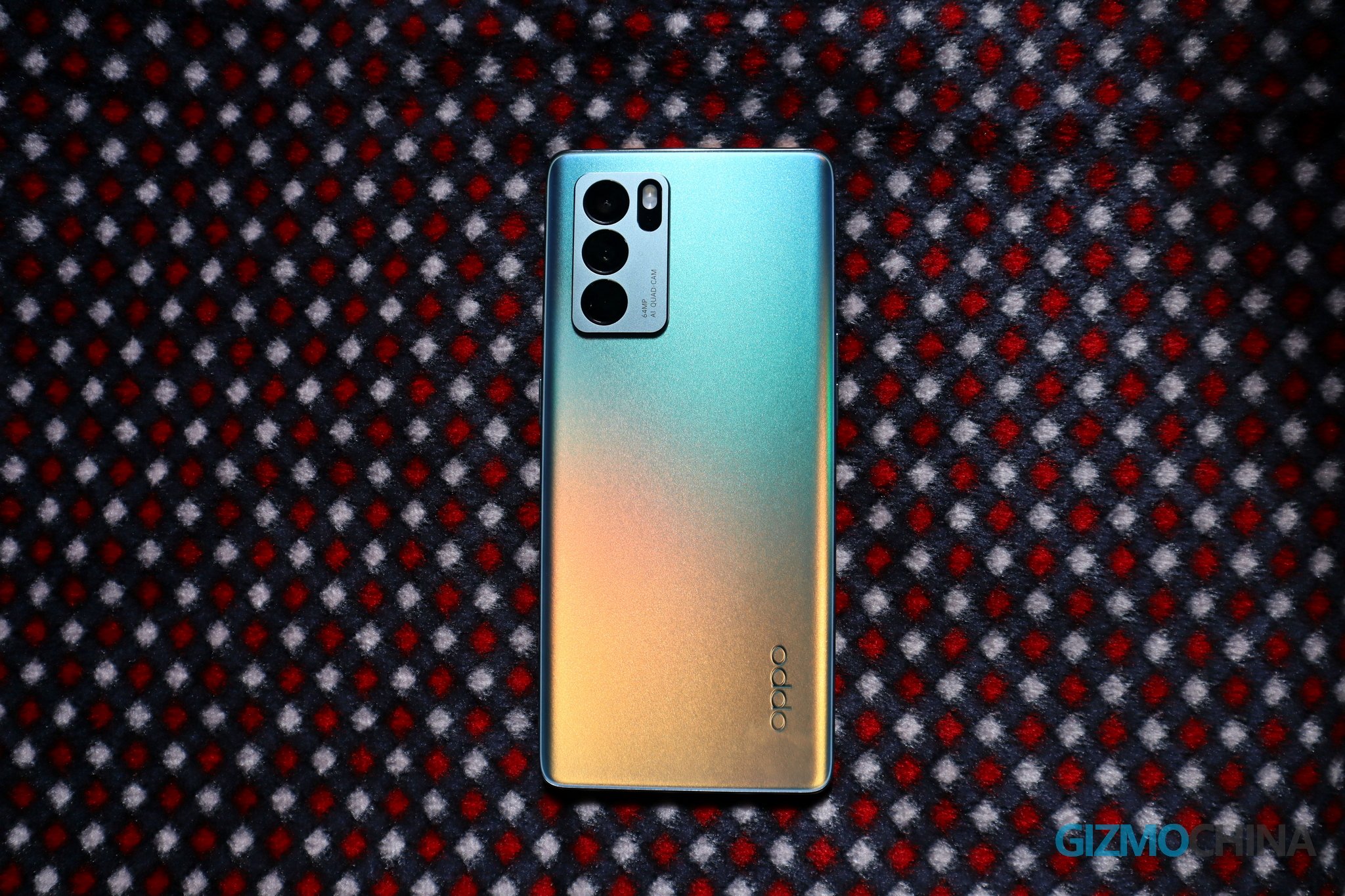
This unique back along with a curved glass panel on both front and rear makes the device stand out in the crowd. The phone is surely a head-turner when you use it in public.
Because of the matte finish, you don’t even require a case. However, OPPO does include a free transparent silicone case in the box.
Talking about placements, the volume keys sit on the left side, while the accented (green) power key resides on the right. The top of the device includes a radium strip that glows in the dark. This side of the phone also houses the secondary microphone. Lastly, the bottom of the handset features the SIM card slot, primary microphone, USB Type-C port, and a speaker grille.
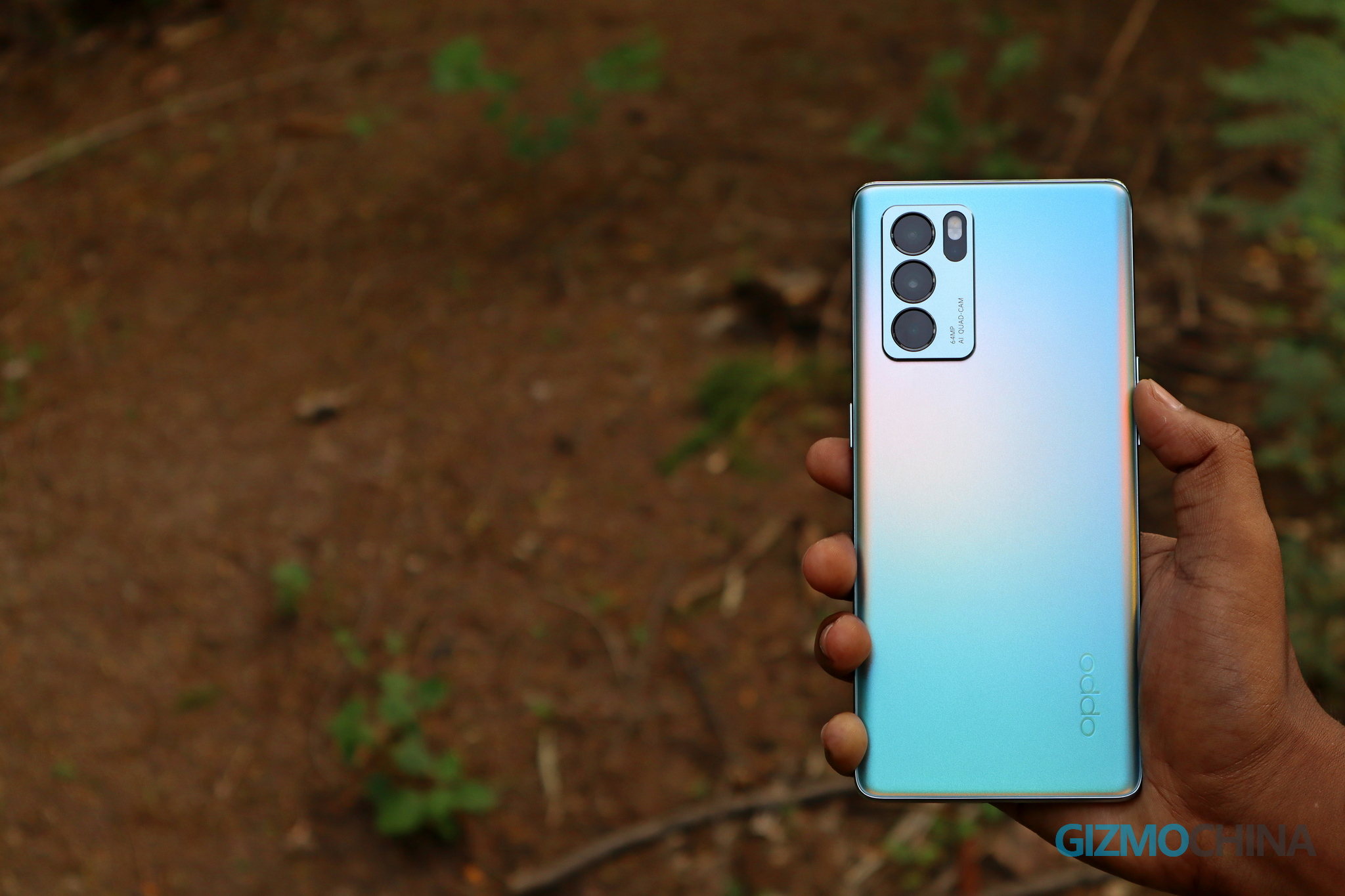
Unfortunately, like most modern smartphones, the device neither has a 3.5mm headphone jack nor features a MicroSD card slot. However, you do get a free pair of USB Type-C earphones in the box.
The smartphone measures around 7.6mm in thickness and weighs about 177g. Hence, it’s comfortable to hold for a longer period of time.
The only two complaints I have regarding the phone’s design are its plastic frame and the lack of an IP rating. It’s weird that the ₹10,000 cheaper vanilla OPPO Reno 6 5G sports a premium metal frame with flat sides.
Display and Sound
Just like the Reno 5 Pro 5G, the Reno 6 Pro 5G also flaunts a curved AMOLED display with a single punch-hole in the top left corner. The screen measures 6.55-inch diagonally packing a resolution of 2400 x 1080 pixels, 402 PPI, 16.7 million colors, and 100% DCI-P3 color gamut.
The panel supports a 90Hz refresh rate, 180Hz touch sampling rate, and 800 nits brightness (typical). The display also houses an optical fingerprint sensor underneath it and offers a 92.1% screen-to-body ratio.
As the specs suggest, the display on the OPPO Reno 6 Pro 5G is great for the price. By default, the smartphone comes with ‘Vivid P3’ mode, which offers boosted saturation. Also, if required, users can opt for ‘Gentle sRGB’ mode for natural colors.
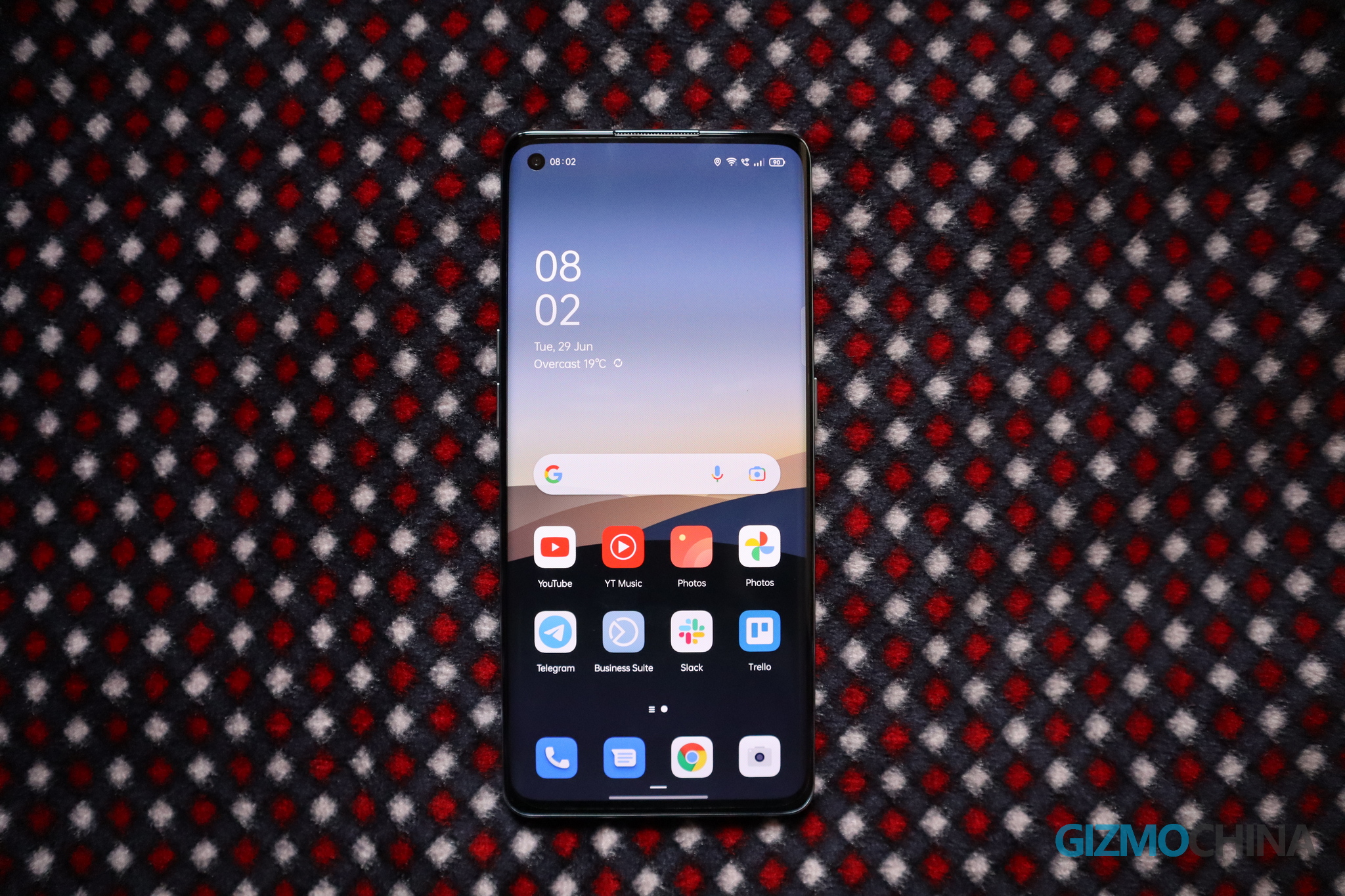
The screen gets quite bright outdoors, enabling better visibility. The brightness is also commendable for HDR video playback on YouTube. Unfortunately, the device does not support HDR content on streaming apps like Netflix and Prime Video. However, it is capable of playing HD content.
The 90Hz refresh rate, which comes enabled by default, offers smooth transitions across the UI. The curved panel looks modern and helps in gesture navigation. Above all, I didn’t face any accidental touches.
Additionally, thanks to the curved display, the smartphone also comes with a feature called ‘Edge Lightning’. This is similar to OnePlus’ Horizon Light notifications. When this feature is turned on, the edges of the screen lighten up for new notifications. This feature makes up for the lack of a notification LED.
There’s also support for Always-on Display (AOD). You can customize as well as create new AOD styles as per your need. The device also comes with OnePlus’ iconic ‘Canvas AOD’. OPPO calls it ‘Portrait silhouette’.
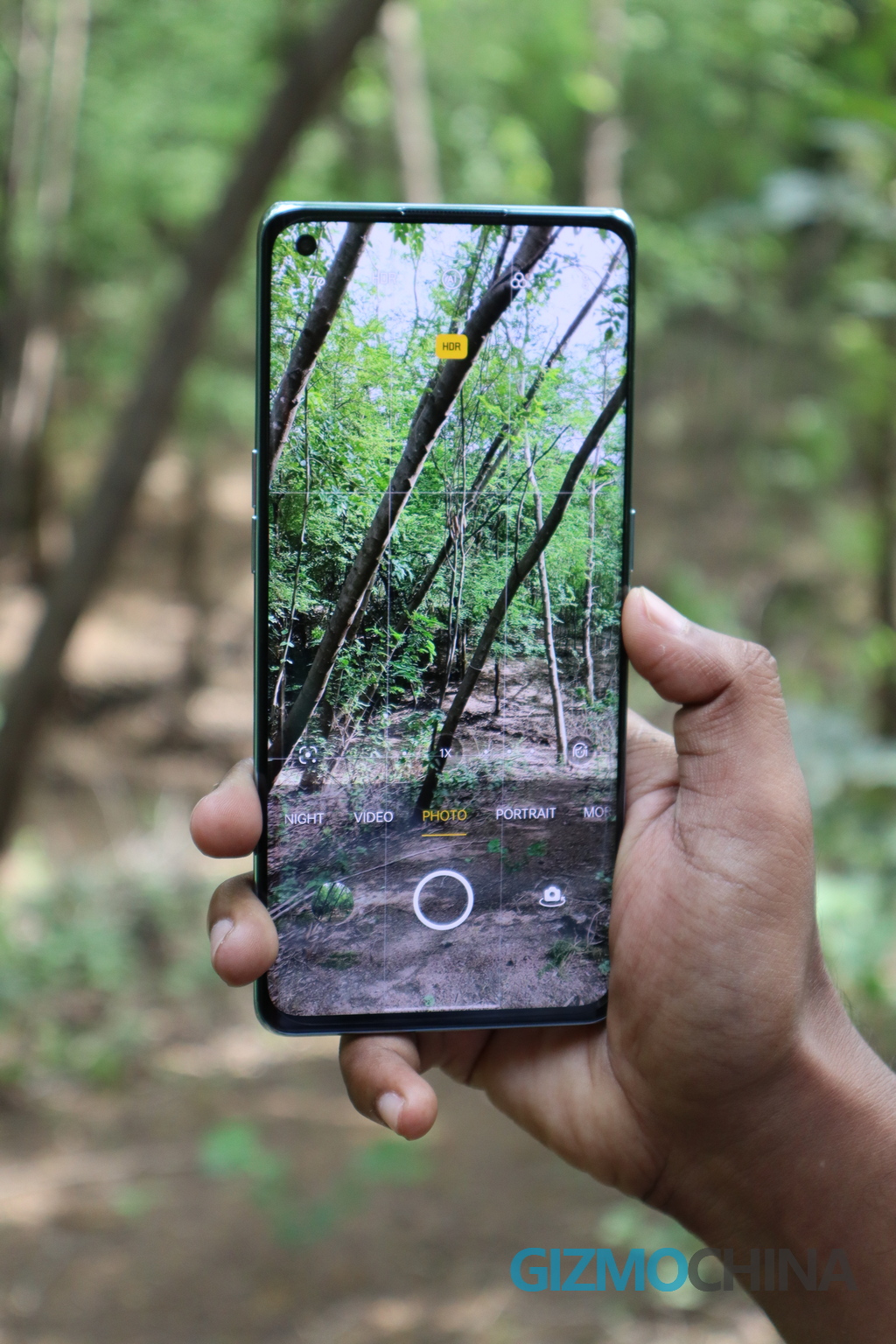
Talking about audio, the handset features a single bottom-firing speaker. Although the sound output from this speaker is better than cheaper phones with stereo speakers, it would have been much better if it had a stereo setup. You’ll often end up blocking the speaker grille while consuming content or playing games. Also, there’s no surround sound experience, which you get from a dual speaker setup. I don’t understand why OPPO skipped on this feature, as it is ubiquitous right now.
Furthermore, there’s no 3.5mm headphone jack. Hence, you will have to rely on wireless or USB Type-C earphones. I didn’t face any issue with sound output via these two.
There’s a free pair of USB Type-C earphones in the box, and they sound too good for a freebie. Finally, pairing with the OPPO Enco wireless earphones is seamless.
Performance and Connectivity
The OPPO Reno 6 Pro 5G is powered by a MediaTek Dimensity 1200 SoC, which is better than the MediaTek Dimensity 1000+ SoC present inside the older OPPO Reno 5 Pro 5G. The company touts this chip to score above 700K on AnTuTu Benchmark. However, in my tests, it was only able to cross 600K.
Anyway, benchmarks are just figures on paper, and they don’t tell the whole story. In real life, the smartphone never felt sluggish. Apps loaded quickly, and they even stayed in memory for a long time, thanks to 12GB LPDDR4x RAM and 3GB virtual RAM, which comes enabled out of the box.
If needed, you can increase the virtual RAM size up to 7GB. Hence, you can get a maximum of 19GB RAM on this smartphone. However, it’s highly unlikely that you’ll ever need that much of RAM. But if you do, know that there’s room for expansion.
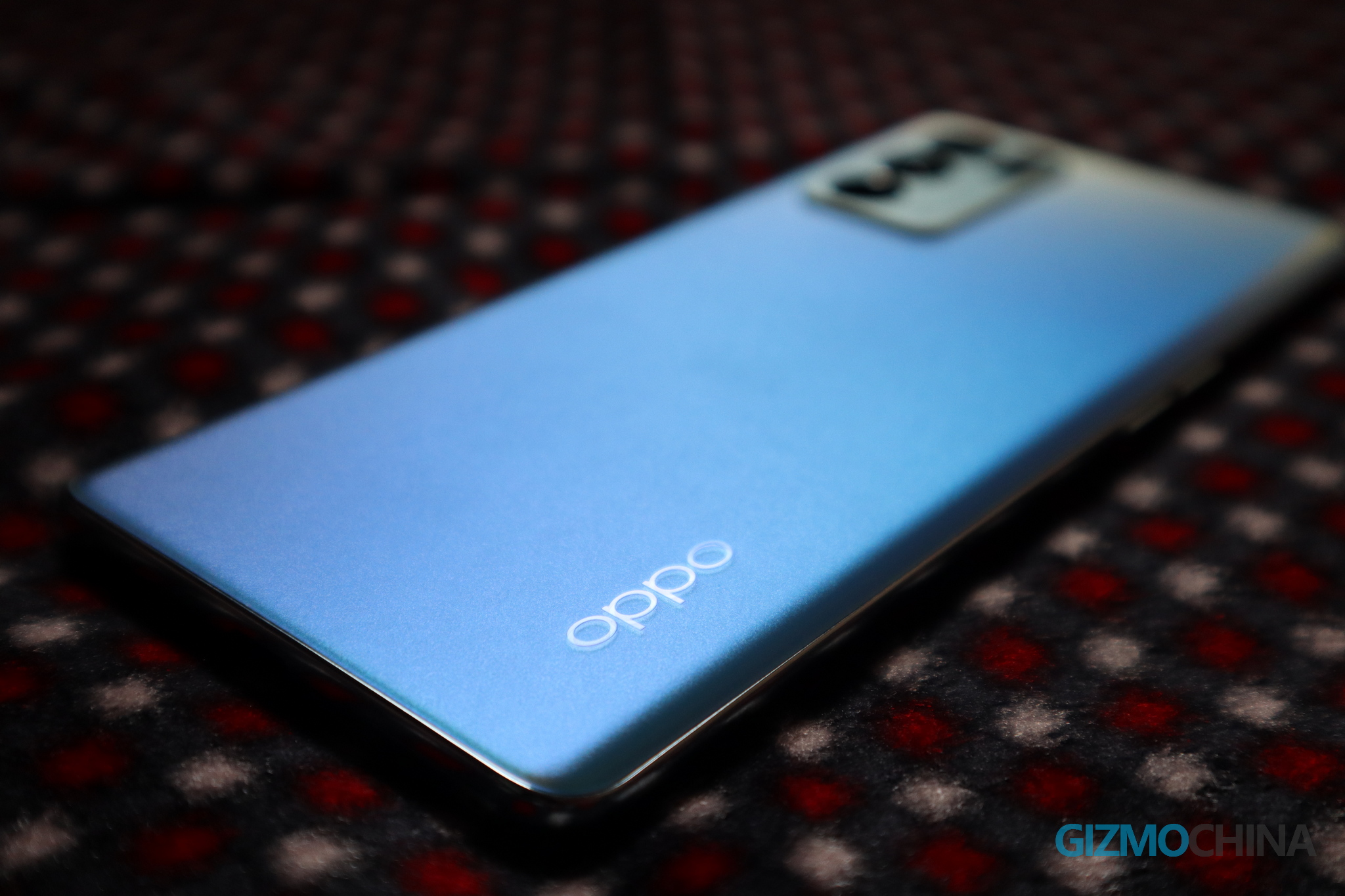 Further, I did not face any hiccups using regular day-to-day apps. But I cannot say the same for games. This handset is not meant for mobile gaming. If you are one of those who want constant 60fps gameplay, then better stay away from this one.
Further, I did not face any hiccups using regular day-to-day apps. But I cannot say the same for games. This handset is not meant for mobile gaming. If you are one of those who want constant 60fps gameplay, then better stay away from this one.
The phone does the job for casual gaming. In a nutshell, you can play high-end games, however, you won’t get the most out of those games. The experience is subpar for the device’s price when compared to the competition.
But I have to give credit where credit’s due, the handset’s cooling system is highly effective. When playing high-end titles like Genshin Impact, the phone does get warm like any other smartphone, but it also cools down quickly.
As for storage, you get 256GB UFS 3.1 ROM. It’s more than enough for most users, and there’s no presence of a MicroSD card slot for expansion.
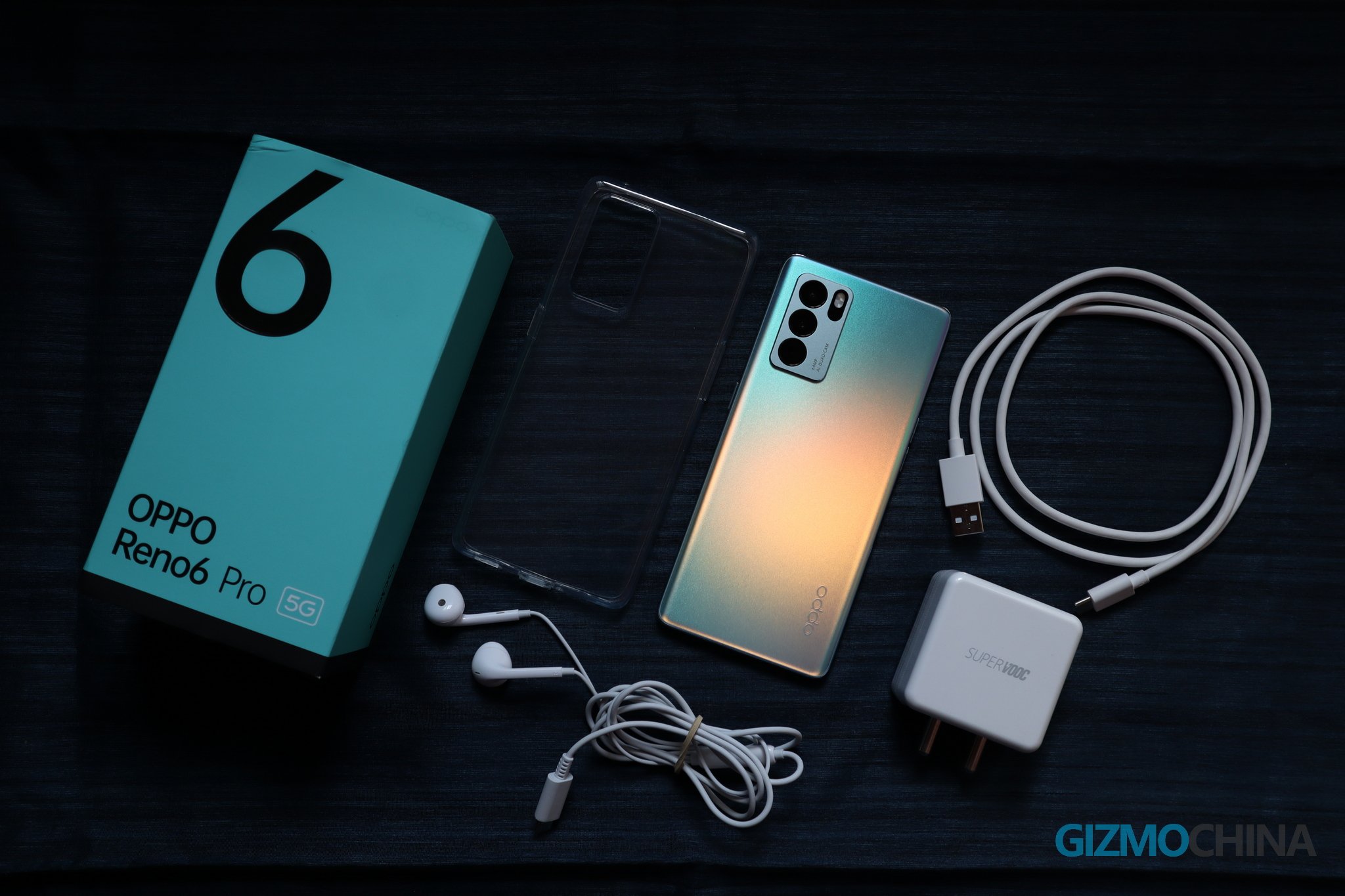
On the connectivity front, the device features a dual SIM card slot, Wi-Fi 6, Bluetooth 5.2, GNSS, and NFC for contactless payments. As clearly marketed in its name, the phone supports 5G connectivity and comes with 11 5G bands (n1, n3, n5, n7, n8, n28, n38, n40, n41, n77, n78).
Since 5G networks are yet to go live in India, I could not test it. But going by the number of 5G bands, users need not worry about compatibility in the future.
The phone performed well on 4G. It supports VoWiFi and VoLTE, in addition to carrier aggregation. I did not face any call drops and the sound output from the earpiece was clear.
Camera
The OPPO Reno 6 Pro 5G houses a quad-camera setup on the back. The setup includes a 64MP primary sensor, an 8MP ultrawide unit, a 2MP macro shooter, and a 2MP monochrome sensor. Whereas, on the front, the device sports a 32MP snapper for selfies and video calls.
Right off the bat, the two 2MP sensors are present only for the namesake. The macro camera outputs low-quality images that are of little to no use. This camera is not capable of focussing on the subject even when the handset is held at an ideal distance.
If an OEM is implementing a dedicated macro camera, they should opt for autofocus and higher megapixels. The telemacro camera found on the recent Xiaomi group smartphones is an example of good execution.
On the other hand, I don’t understand the use of a dedicated 2MP monochrome sensor when the smartphone does not let you use it manually. Selecting the B&W filter in the camera app does not switch to the 2MP monochrome sensor. Looks like the device only uses it for better contrast and sharpness in pictures shot from the wide and ultra-wide-angle cameras.
Unfortunately, the primary 64MP sensor, as well as the secondary 8MP ultra-wide-angle camera, are not that great either. Their performance is lackluster with inaccurate colors and a warmer tone.
However, images from these two lenses have a good high dynamic range (HDR) and contrast. But for some reason, they are overdone most of the time. As a result, the HDR looks unnatural.
I believe this problem persists because of the cameras’ inability to adjust brightness by themselves. A normal user wouldn’t fiddle with the contrast slider to adjust the lighting. They would simply tap to focus and click on the shutter button. I did the same and the results were unimpressive in difficult scenarios.
Both the wide and the ultra-wide-angle cameras perform well when there is an ample amount of light. Even during these situations, the pictures taken from the ultra-wide-angle camera lack details, and they have the fish-eye effect at the edges, which I don’t consider as a negative, but your opinion may vary.
Most importantly, I didn’t like the camera’s algorithm for skin colors. The handset struggles with dark skins. It does not output accurate colors. Instead, it whitens the skin. I want my skin to be reflected as it is. This happens even when AI Beautification is turned off. The cheaper Samsung Galaxy A52 does a better job in this regard.
The whitening of dark skin is applicable to both rear and front cameras. OPPO has an R&D center in India working on a lot of features and one of them is image processing. I hope the company makes some improvements in this department tailored for locals.
Further, the 32MP selfie camera performs just like the two primary cameras on the rear. There’s no major difference between them. Hence, you get that same HDR processing, which helps in taking selfies against harsh backlight.
As far as video recording is concerned, the device maxes at 4K 30fps without stabilization. However, I mostly shot videos at 1080p 60fps on this phone. Above all, I enjoyed using ‘Ultra Steady’ mode, which crops the frame but offers better stabilization. This mode is well-suited for walking, but it does not work well while running.
Finally, let’s talk about the handset’s key selling point – Bokeh Flare Portrait Video. This video feature enables DSLR-like flare effects. How does it perform? It works quite well. In my experience, I found it to be better in daylight than during the nighttime.
So the question arises: Is this feature comparable with DSLRs? Of course not. The smartphone struggles with edges. Also, it’s terrible when the subject has uneven hair or accessories like glasses, a mask, or a hat.
But I believe OPPO could improve the feature in the next generation. Why do I say this?
Because the AI Highlight Video introduced on the OPPO Reno 5 Pro 5G appears to have noticeable improvements on the OPPO Reno 6 Pro 5G, but it does apply beautification even when turned off.
For those unaware, AI Highlight Video offers HDR and other corrections while recording videos against strong backlight. This feature works on both rear and front cameras, just like Bokeh Flare Portrait Video.
Software
The OPPO Reno 6 Pro 5G runs ColorOS 11.3 based on Android 11. It is my second favorite thing about this phone, after its design. The software on this device is well optimized for its hardware.
I didn’t encounter any stutter. It felt smooth, thanks to the combination of satisfying animations and a 90Hz refresh rate. The navigation gestures felt natural due to the curved display. I am not surprised why Master Lu Benchmark ranked ColorOS as the smoothest UI of 2020.
Like any other Chinese Android skin, there are lots of customization options to play with. Do read our dedicated article on ColorOS 11 features to learn more about them.
Talking about cons, the handset arrives with a number of bloatware. Fortunately, all of them can be uninstalled, except for Netflix. It also comes with Google Phone and Google Messages instead of OPPO’s first-party apps. These two crucial apps look out of place as they don’t match with the ColorOS design.
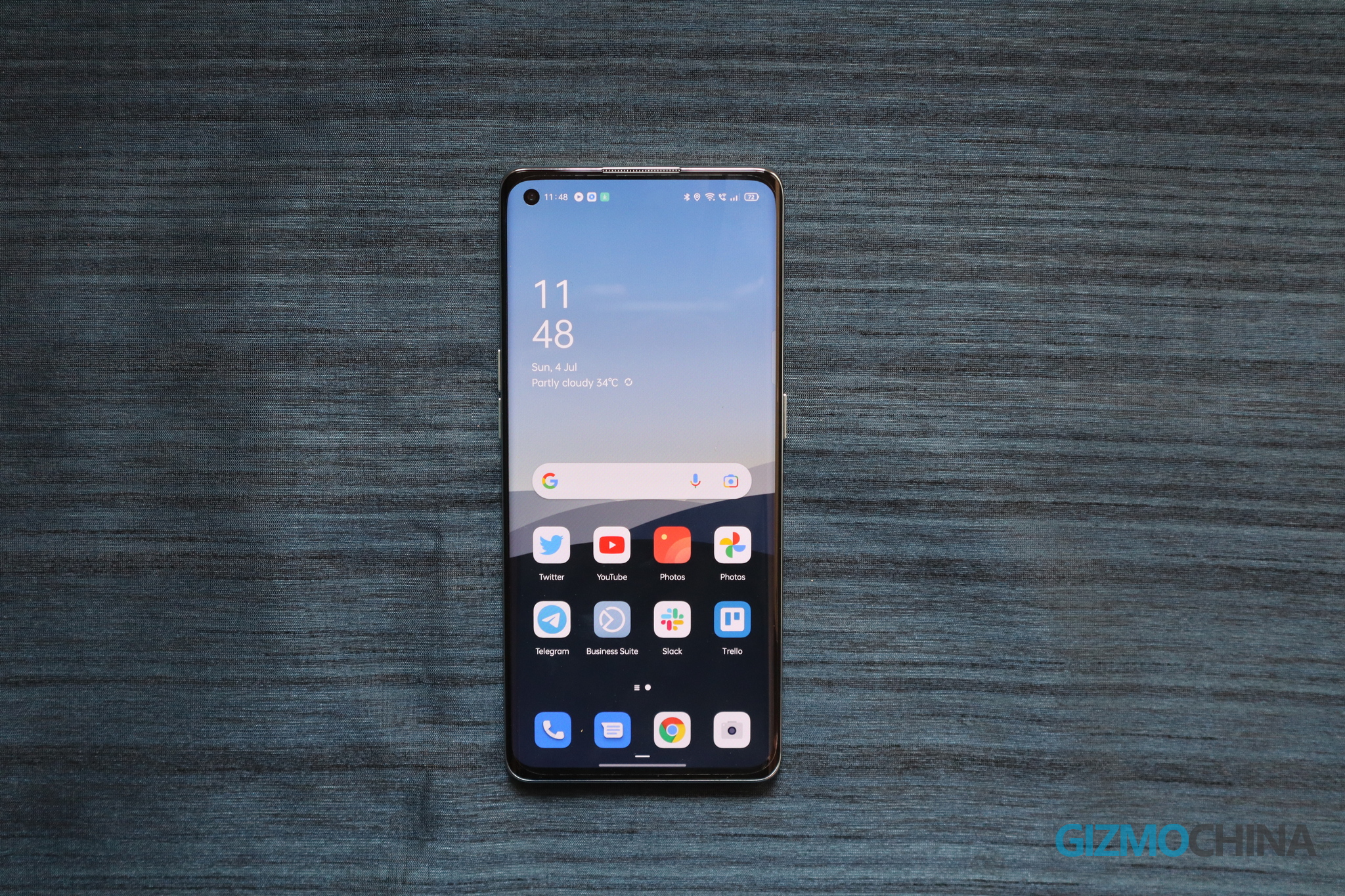
The most annoying thing of all was the notification from some of the inbuilt apps. Even though I never opened the OPPO Browser and the Theme Store, they kept pushing multiple notifications every day to lure me in to use them.
Traditionally, the OPPO Reno series smartphones are eligible for two Android updates. Hence, the OPPO Reno 6 Pro 5G should receive up to Android 13, although the company has not confirmed it yet.
Finally, since OnePlus has now merged the codebase of OxygenOS with ColorOS, we can expect the Reno 6 Pro 5G to get some OnePlus software features in the future.
Battery and Charging
The OPPO Reno 6 Pro 5G is backed by a 4,500mAh battery. It can last up to one and a half days on a full charge with moderate usage. If you play games or use cameras extensively, then it will only last a day or less.
Like any other high-end OPPO smartphone, this model also supports SuperVOOC 2.0 fast charging protocol. The power adapter, as well as the compatible USB Type-A to USB Type-C cable, is included in the box.
In my tests, the handset took about 28 minutes and 30 seconds to charge from 20% to 100%. The battery goes up to 41% within the first 5 minutes and up to 70% in 15 minutes.
Further, the device also comes with a feature called ‘Optimised night charging’, which is enabled out of the box. This feature prevents overcharging by automatically controlling charging speed at night by learning the user’s daily charging routine. In simpler words, this feature ensures the battery charges slowly, only getting to 100% by the morning.
Verdict
The OPPO Reno 6 Pro 5G is definitely not an all-rounder. The handset only excels in design, software, battery life, and charging. If that’s what you want in a phone, you are in for a treat.
If you take lots of pictures or play graphics-intensive games, then don’t even think about buying it. There are better options in the market to satisfy those needs in the same price segment.
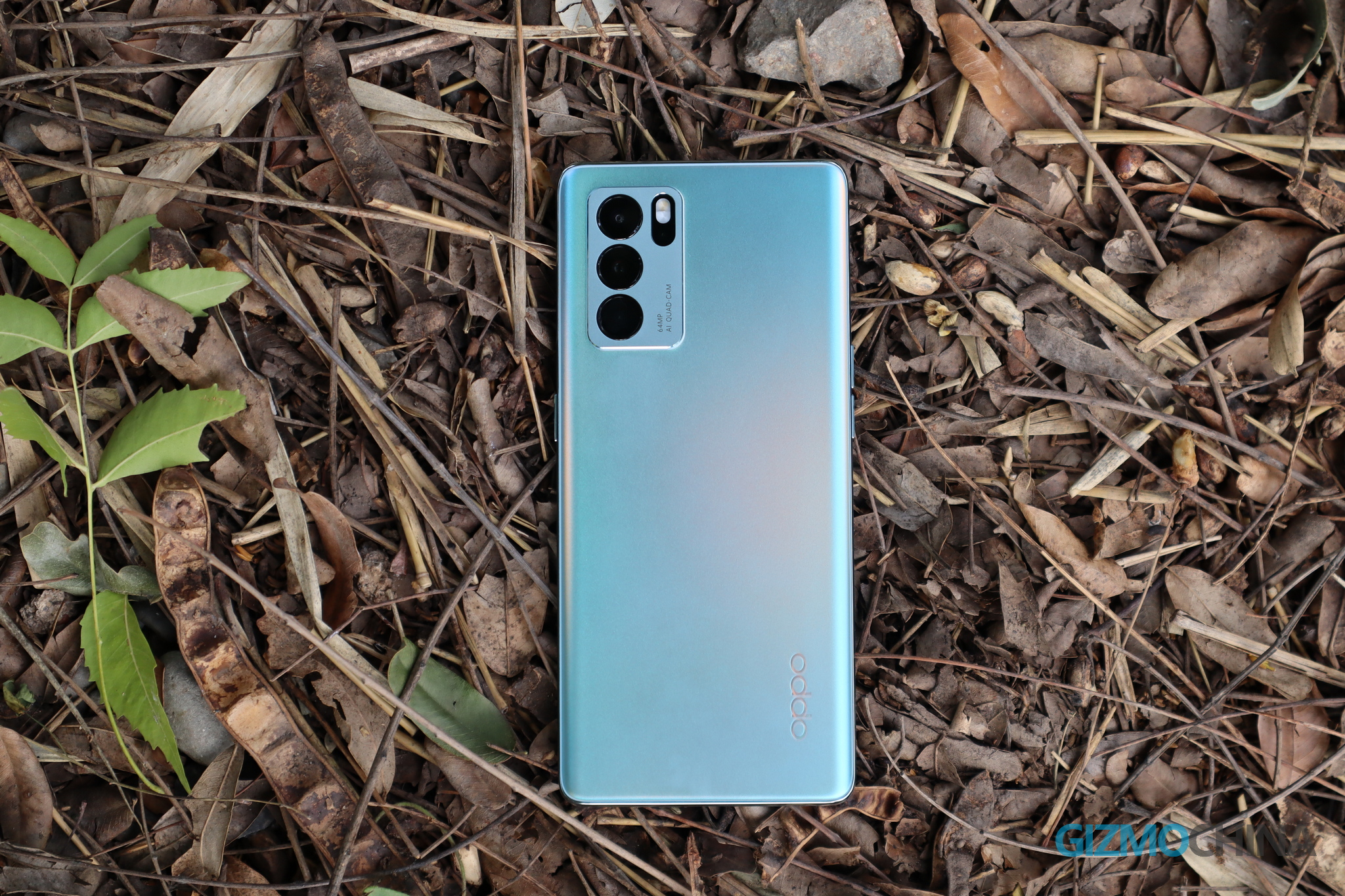
The OPPO Reno 6 Pro 5G is a type of smartphone that one needs to experience in order to appreciate it. As they say, the spec sheet never tells the whole story.
So is it worth ₹39,990? Well, it’s for you to decide whether you are willing to pay that much for its ergonomics and software. If you cannot spend that much, there’s the older OPPO Reno 5 Pro 5G priced at ₹35,990. The predecessor offers you almost the same experience at a slightly cheaper price.
If you want to save more bucks, then you can choose the vanilla OPPO Reno 6 5G, which costs only ₹29,990 and still offers an almost identical experience.
RELATED:
- Best Camera Smartphones of H1 2021: S21 Ultra, Mi 11 Ultra, X60 Pro+, Find X3 Pro & Oneplus 9 Pro
- Best Gaming Smartphones 2021 Comparison: ROG 5 vs Legion 2 Pro vs Blackshark 4 and more!
- Here are our Best Smartphones of 2021 so far: Gizmochina Awards
- Gizmochina Awards: Best Smartphones of 2021

